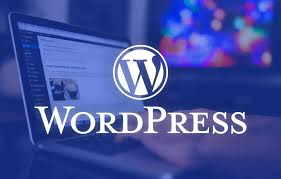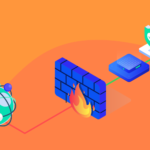Nowadays WordPress has become one of the most used CMS (Content Managers) in recent years, using it is very simple, thanks to its quite dynamic and friendly interface that allows expert and inexperienced users with a couple of clips to have your website in a matter of minutes.
But not everything is beautiful, since many times having so much access to endless repositories of themes and extensions (Plugins), we believe that the more plugins we install our WordPress (website) the better it will look.
Well NO, that is a mistake that is made daily, since the more plugins you install and the more you are not clear about its purpose and functionality, your website will become slower and slower due to the number of requests it has to make to your server.
But don’t worry, Intelplanet is here to help you and has created this guide on how to improve the speed of your WordPress.
In this guide I explain each process that you have to take into account to have an optimized website and thus improve the speed of your website.
Images
This point is where we often fail because we want to upload high quality images, the larger the image size the clearer our site will look. NO.
You have to learn to recognize the main types of images that you can use on your website. I will explain two well-known formats that will help you improve response times by 50% if you use the appropriate format and size.
PNG (Portable Network Graphics) This format is characterized by allowing you to have transparency, that is, an image with a transparent background. It is widely used for logos, creating image layers for banners, sliders and more. This format tends to think of a little more so the recommendation to use it with specific measurements and only with transparent images.
JPG (Joint Photographic Experts Group), translated into Spanish as Grupo Joint de Experts in Photography, is the name of a committee of experts that created a compression and encoding standard for files and still images. This format is the most used on the web. since it allows for tremendous compression, and regulates its loss of quality in percentages, this allows an image with a large number of pixels to be compressed to an appropriate percentage, thus giving less weight to the compressed image and thus improving the response times of your website.
Once we have our entire website with the images in the appropriate size and format, we can make our website move faster, but the speed still needs to be improved.
Every day a series of plugins appear that do just the opposite: Improve the optimization of your WordPress. Below we will give you a list of the best plugins to improve the loading speed of your website.
WordPress plugins that will improve the loading speed of your Website
- WP Fastest Cache
This plugin creates static html files from your dynamic WordPress blog.
When rendering a page, php and mysql are used. Therefore, the system needs RAM and CPU.
If many visitors come to the site, the system uses a lot of RAM and CPU, so the page renders very slowly.
In this case, you need a caching system to not render the page over and over again.
The cache system generates a static html file and saves it. Other users arrive at the static html page.
Setting up this plugin is very easy. There is no need to modify the .htaccess file. It will be modified automatically.
- WP Smushit
Previously we talked about using images appropriately, however we added this extension that allows extra compression to be performed on all the images that we have in our directory. With this plugin you can do:
Resize images, optimize and compress all your images.
Now with image resizing! Set a maximum width and height and large images will shrink as they are compressed.
Large image files may be slowing down your site without you knowing it. WP Smush uses WPMU DEV super servers to quickly remove each of your images and trims all unnecessary data without slowing down your site.
Smush meticulously scans every image you upload, or have already added to your site, cropping out all unnecessary data and scaling it for you before adding it to your media library.
- Fast Velocity Minify
This plugin reduces HTTP requests by merging CSS and Javascript files into file groups, while trying to use as few files as possible. Reduce CSS and JS files with PHP Minify (no additional requirements).
There are also options to apply critical CSS and load asynchronous CSS, as well as to define preload and HTTP preload (server push) headers.
The reduction is done on the frontend during the first unfiled request. Once the first request is processed, any other pages that require the same set of CSS and JavaScript files will receive the same (static) cache file.
In summary
The speed of your WordPress Website will depend on the optimization you perform and the elements you store on it. If you become aware of all the tools and tips that IntelPlanet has given you in this article, you will improve its response speed.








